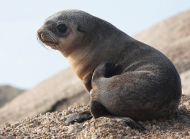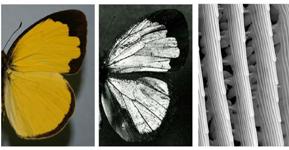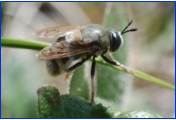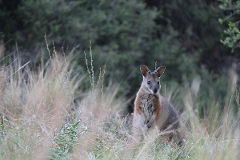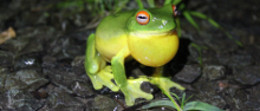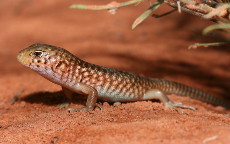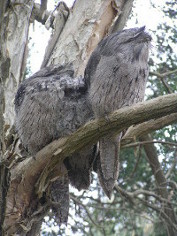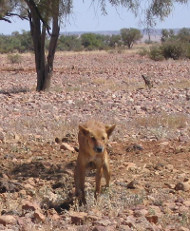Australian Journal of Zoology
Volume 60
Number 2 2012
We tested skull morphological and visual assessment for classifying wild canids in south-eastern New South Wales, and examined temporal and geographic trends in skull morphology. Hybridisation was evident although skull morphological and visual assessment results were dissimilar. In addition, geographic variation was apparent with skulls increasing in size with altitude. Improved classification methods are needed with consideration of geographical variation.
During development, the Australian fur seal transitions from a terrestrial maternally dependent pup to an adult marine predator. This study examined the properties of the trapezius muscle (used in swimming) in relation to different fibre type proportions, their oxidative capacity, as well as myoglobin and total creatine content as diving behaviour developed.
Snorkel based surveys for larvae and juveniles quantified the upstream expansion in nursery grounds of the endangered Macquarie perch Macquaria australasica. The successful expansion has arisen from installation of a fishway on the Cotter River, Australian Capital Territory.
Structurally-generated colours are widespread and varied but we know relatively little about the proximate causes of such phenotypic variation. Here we present evidence that sexual dimorphism in the expression of a sexually homologous trait (iridescent ultraviolet) is mediated by sex differences in the density of lamellar-bearing scale ridges.
We describe the development of five novel microsatellite loci in the rare European hoverfly, Microdon mutabilis, using next-generation sequencing (454) and three previously undescribed M. mutabilis microsatellite loci using enrichments. The number of alleles per locus ranged from 2 to 16, and the observed heterozygosity was between 0.26 and 0.97.
We examined relationships between body condition and reproductive traits in two wild populations of the tammar wallaby (Macropus eugenii) on Garden Island, Western Australia. Variation among females in body condition influenced the timing of reproduction, whereas annual variation in precipitation influenced population weaning success in a native bushland, but not in a water-supplemented habitat on a naval base.
The advertisement calls of most frog species are thought to convey information on male quality. Here, we investigate whether male calls could also facilitate individual recognition. Call properties from the Australian frog Litoria chloris were tested for consistency with each of these theories, and it was found that the calls have features consistent with both signalling functions.
The endangered Slater’s skink, is an obligate burrower restricted to the floodplain habitat of central Australia. We provide detailed information about the behaviour and use of the burrow systems by Slater’s skink. That emphasises the importance of the burrow systems for this lizard and suggest conservation measures should focus on ensuring that a reliable supply of stable and suitable burrows are maintained in their preferred habitat.
We isolated 24 novel polymorphic microsatellite markers from the tawny frogmouth, a nocturnal bird endemic to Australia, using 454 shotgun sequencing. We show that this suite of loci will be sufficient to unequivocally identify individuals and will be useful in understanding the reproductive ecology, population genetics and gene flow amongst tawny frogmouth populations.
The number of dingo scats found at resource points has been used as an indirect measure of dingo pack stability in studies assuming that scat collection rates vary little throughout the year. We tested this assumption, and found that scat collection rates vary considerably both spatially and temporally, at fine and broad scales, and independently of lethal dingo control. Scat collection rates may therefore be a poor indicator of dingo abundance or pack stability.




